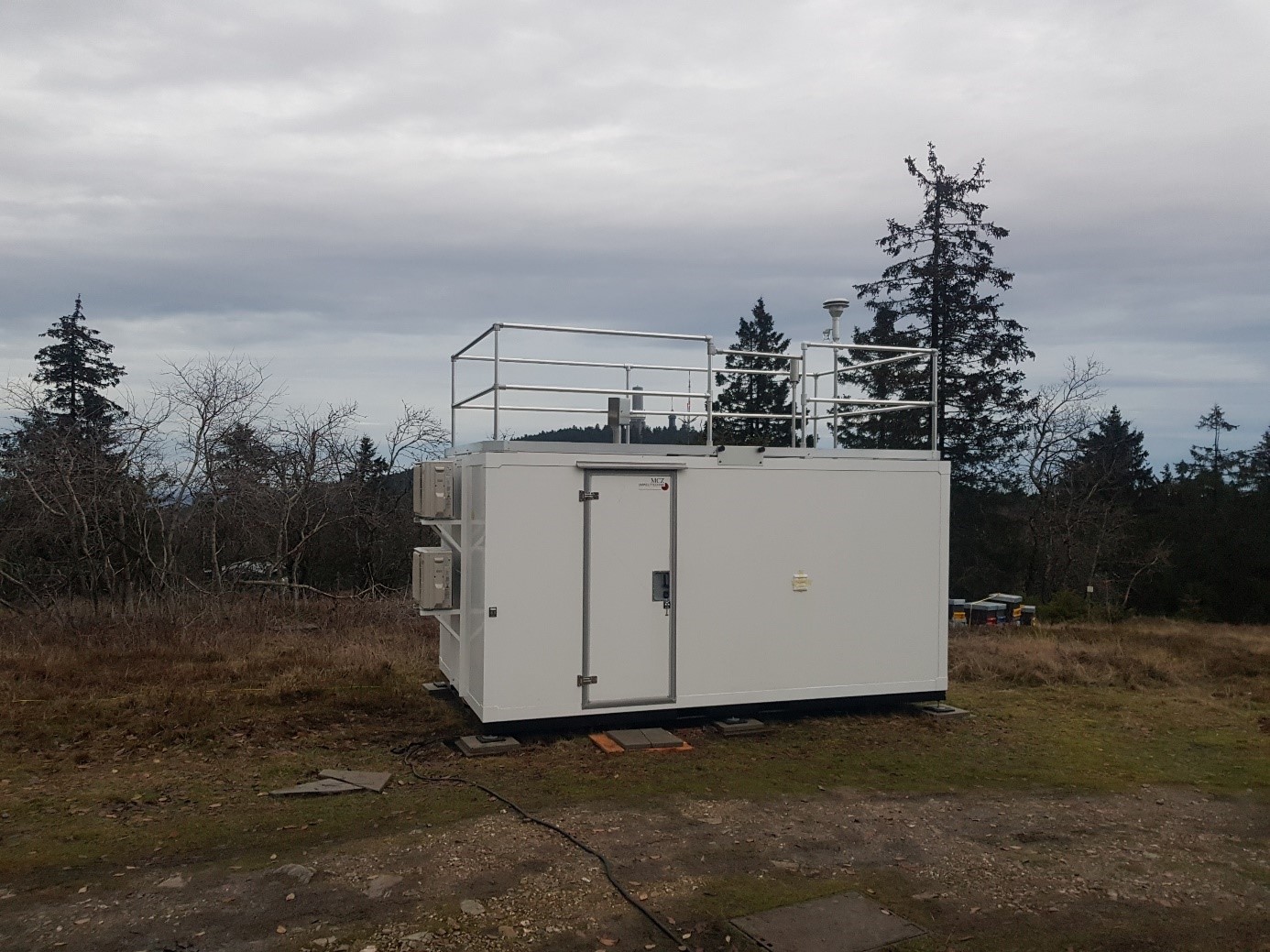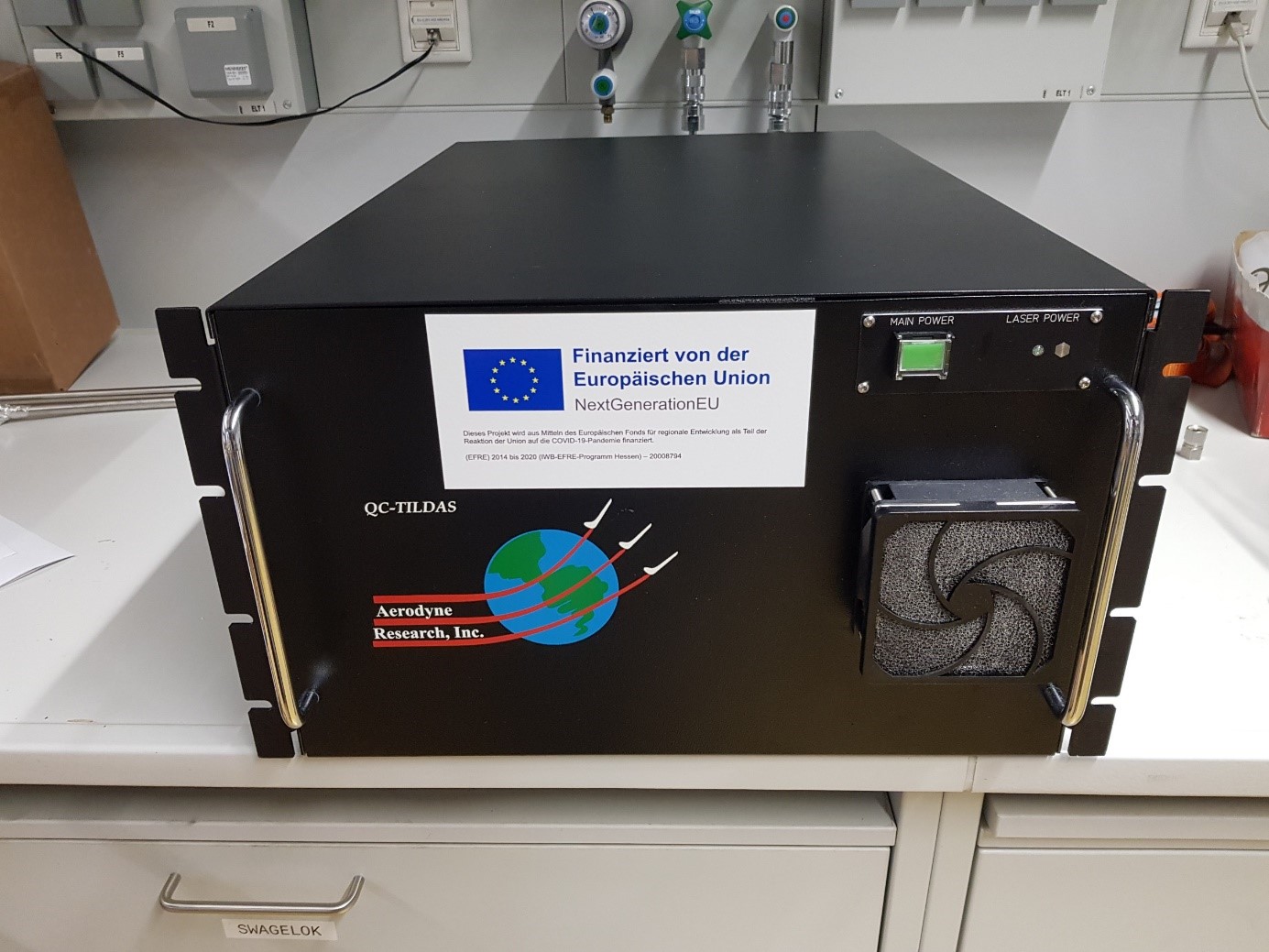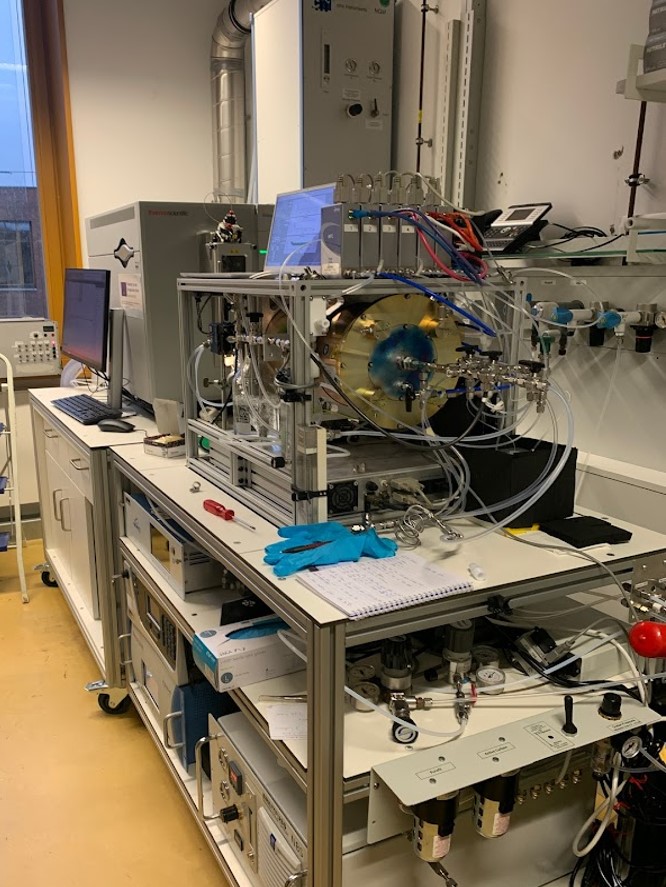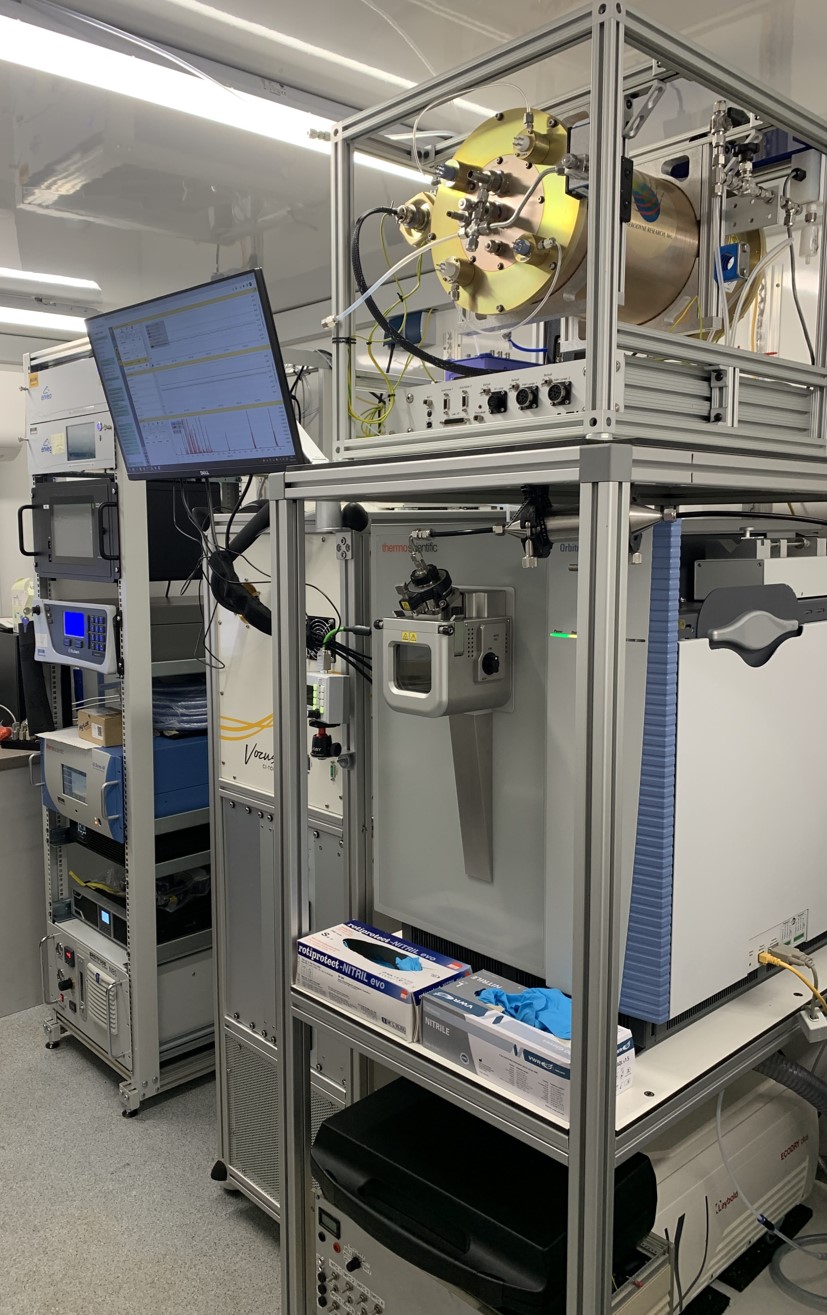REACT-EU
Within the project, a mobile measuring container is equipped with state-of-the-art instruments for atmospheric research. The measuring container is used to characterize anthropogenic emissions (trace gases and aerosols). The atmospheric components to be measured have a major impact on air quality and human health as well as on the climate.

Figure 1: The mobile measuring container at Taunus Observatory
With the help of the mobile laboratory, measurements can be carried out at a wide variety of locations. This allows determining the source strengths of air pollutants for different sectors. In particular, emissions of nitrogen-containing compounds (N2O and NH3) from agriculture can be examined in detail. This is particularly important because agriculture plays an important role in the release of greenhouse gases and ammonia, with the latter contributing significantly to the formation of harmful aerosol particles. It is estimated that agricultural emissions will increase - or at least decrease less - in the future than emissions in other sectors. Monitoring emissions in this sector is therefore very important. However, currently there are hardly any measurements, especially with regard to gaseous ammonia, because they are complex and expensive. Furthermore, the required automated, highly sensitive measurement methods have only been developed in recent years.
The measurements with the purchased instruments cover the aerosol size distribution from a few nanometers to several micrometers. Furthermore, the fraction of soot in the atmospheric aerosol is determined. With regard to trace gases, ammonia (NH3) as well as the long-lived greenhouse gas nitrous oxide (N2O) and carbon monoxide (CO) are measured as tracers for anthropogenic pollution.
Another important research question in this context is the extent to which ammonia contributes to the formation of new aerosol particles (nucleation). The devices used here (particularly TILDAS and PSM, see below) can help answering this question.
In addition to agricultural emissions, the mobile laboratory can also be used to characterize other sources, e.g., from vehicles or industrial processes. Here too, the measurement of variables such as the total aerosol number concentration, the aerosol size distribution, the soot concentration and the ammonia concentration plays an important role. Since the measuring stations of the states and the federal government in Germany do not routinely monitor these variables, such measurements are urgently needed.
The instruments and equipment procured under EFRE REACT-EU are listed below together with a brief explanation:
- Mobile and air-conditioned measuring container, equipped with special inlets for sampling aerosols and trace gases.
- Aerosol spectrometer for measuring the aerosol size distribution over a wide size range with high time resolution (APS).
- Absorption spectrometer for determining the ammonia concentration in the gas phase with high time resolution and sensitivity (QC-TILDAS).
- Absorption photometer for measuring the soot concentration in the atmospheric aerosol with high time resolution and sensitivity (Aethalometer).
- Particle counter for determining the total aerosol concentration above a diameter of approx. 1 nm; in addition, the aerosol size distribution can be determined in the range from 1 to 3 nm (PSM).
- Spectrometer for precise and rapid measurement of N2O and CO (Picarro G5310), including a server station for automated data evaluation.
- Orbitrap Exploris 120 (Thermo Fisher Scientific). This instrument enables in-situ and real-time measurements of aerosol composition, with a specific focus on analyzing particle-bound organic pollutants in urban and rural areas (for more details please download a poster)


Figure 2: a) QC-TILDAS, and b) Picarro G5310


Figure 3: a) Orbitrap-MS setup for laboratory experiments, and b) Orbitrap-MS system inside the measurement container
In addition to these instruments, the mobile laboratory can be equipped with further ones that are available in our working groups in order to supplement - depending on the specific research questions - the basic equipment mentioned above.





